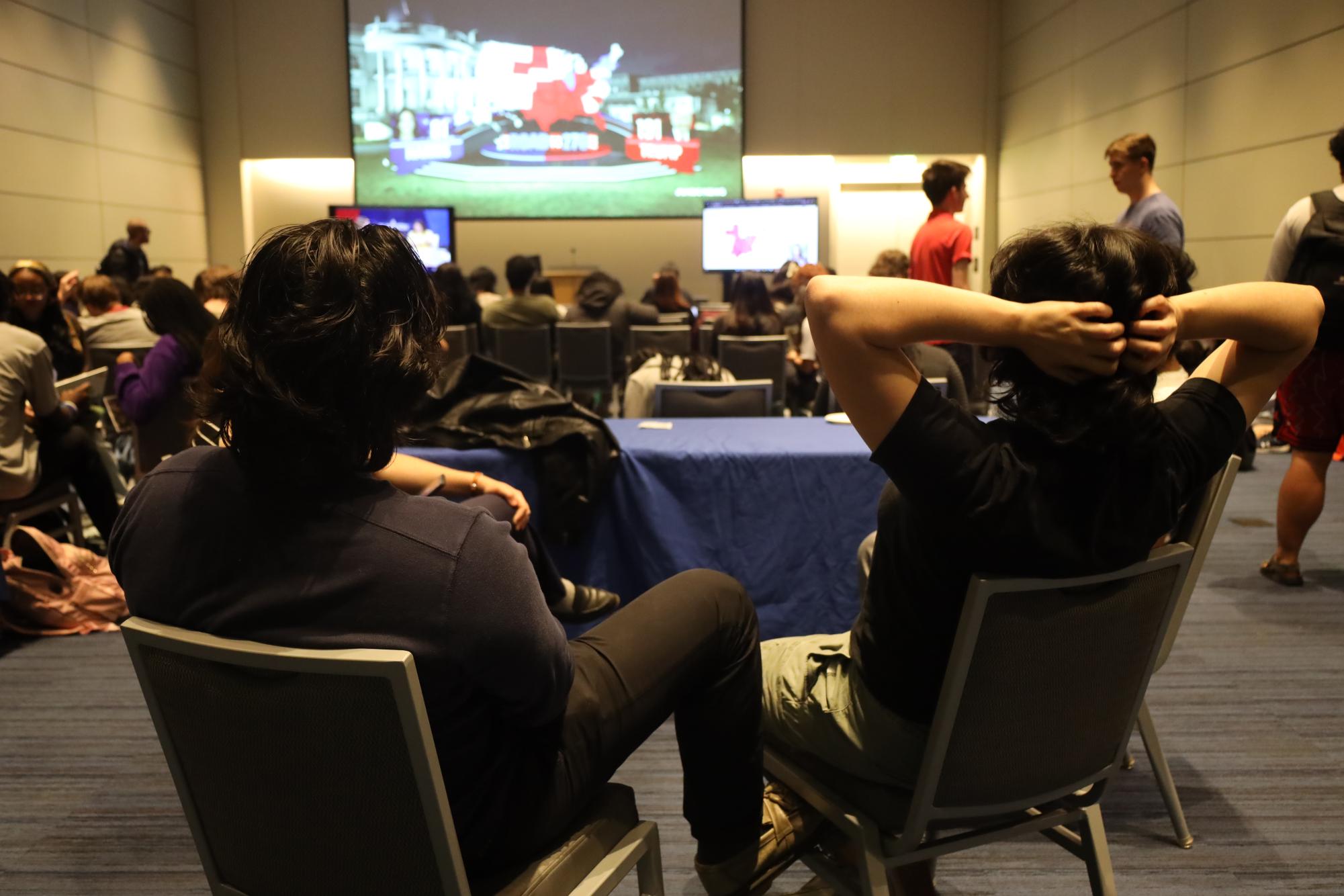On Nov. 5, the Case Western Reserve University community, and the rest of the country, gathered to watch the 2024 U.S. presidential election. While many students voted early or by absentee ballot, the day was still full of excitement with some students casting in-person ballots and anxiously awaiting the election’s results.
A university-wide email, sent out by President Eric Kaler, notes that “Election Day polls are now open, and I urge every eligible voter to exercise their right to vote in today’s general election.”
A large part of the voting effort this year was run by the Center for Civic Engagement and Learning (CCEL), who offered free transportation from 10 a.m. to 5 p.m. on election day. Running to three separate polling locations, 185 students took advantage of the shuttles running to the polling locations, and 16 additional students boarded a shuttle going to the Board of Elections to drop off their absentee ballots.
Student volunteers from CWRUVotes, described by CCEL as a “non-partisan volunteer group,” helped run the operation. Students from the group were stationed at two tables—one outside Tinkham Veale University Center and the other outside One to One Fitness.
CWRU was not the only community group within Cleveland providing easy access to voting. For example, the Greater Cleveland Regional Transit Authority, with funding from Cleveland VOTES and the Cleveland Foundation, made all RTA travel on election day free of charge.

Once the Ohio polls closed, and many students on campus proudly showed their “Oh(I)o Voted” stickers, the post-election festivities began.
One of the major events hosted on the CWRU campus was a joint watch party between the Case College Republicans, Case Democrats and the Department of Political Science. The watch party was held in Tinkham Veale Ballroom B. There, they had three different screens running with NBC playing on the large screen and a local Ohio news source on the television.
Case Democrats President Jonah Ledet said, “I wanted to create a space where everyone can come and watch the election together, whether you’re on the left or the right, all that matters is that you are here with us now to come for the most consequential elections in our lifetime.”
President of Case College Republican Nicholas Soares, a fourth-year student, expands more on the purpose of the joint watch party. “The goal of organizing this event was to promote both the college Republicans and Democrats and show that we can work together to promote bipartisanship and fair discussion of political topics. The watch party was an event where students, regardless of their partisan affiliation, could celebrate American democracy at work,” he said. “We have collaborated with the Democrats before and will certainly do so in the future. This was a good opportunity for Case students to hear both side’s take on such an important political event.”
Many students attended the watch party for a sense of community. Juilana Graza, a second-year student, noted that she and her friends were “just really anxious about the results. And a watch party kind of eases that because at least you can be with your friends and talk about it as it unfolds.”
On the other end of the political spectrum, Stephan Norquist, secretary of the Case College Republicans and a second-year student, attended the watch party, as he likes “learning about politics and other people’s opinions on them.” He said, “A lot of the people who I hang around tend to not particularly have a particular political ideology, and I wanted to mix around people who have different ones.”
Through the commentary, professors from the political science department invited a variety of speakers to talk as the election results were coming in live. Makaila Burnham, a second-year student, noted how helpful this was. They said, “I’m not a politician, I don’t study political science, so just seeing them explain it while I’m here is really helpful.”
As of the morning of Nov. 6, Cuyahoga County reported a voter turnout of 64%, a number which may increase as provisional and late mail in ballots arrive. In terms of local races, Issues 49 and 55—a tax levy for Cleveland schools and an increased cigarette tax for Cuyahoga County Arts and Culture—passed. Issue 1, a measure to revise the redistricting process, did not pass. Senator Sherod Brown was not reelected and President elect Donald Trump received Ohio’s 17 electoral college votes.
Simon Fox, a second-year student, reflected on Issue 1 not passing. He said, “It’s always hard to make something that’s bipartisan and get people to agree to it … I just think the implementation wasn’t planned right.”
At the watch party, some students expressed melancholy about the result of Ohio’s electoral college votes. Graza explained that she was “pretty sad that Ohio was red this year. I’m really hoping that we get to see the first woman in office, just to see more humanity in politics in general, and more acceptance for, you know, the different people that we have in this country. I really hope that we go in that direction.”
Likewise, some students are disheartened about how much say they have as young voters in Ohio. Norquist said, “I was initially disappointed that I was not able to vote in this election, but I’m increasingly realizing that I don’t think it would have made as much of a difference as I wished it would have, and that’s a little sad.”




